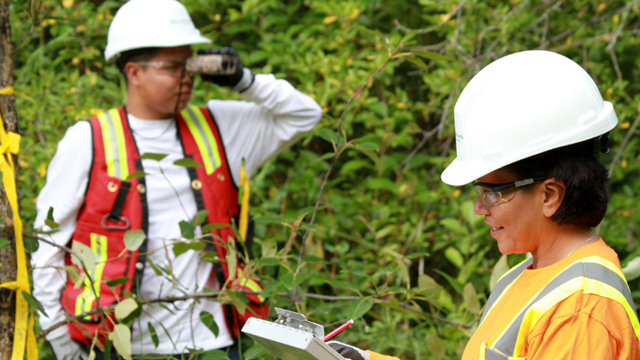Respect and mutual benefit lead to project agreements
Posted by Coastal GasLinkCoastal GasLink’s relationship with Aboriginal groups can be captured in one word — respect. Respect for the distinct history, cultures and legal status of Aboriginal groups and their unique relationship to the land. This, combined with responsiveness to community interests, is the pillar upon which TransCanada has built enduring relationships that support specific local needs business objectives.

For over thirty years TransCanada has built strong, long-term relationships with Canada’s First Nations through project agreements, community investment, contracting and educational opportunities.
In northern British Columbia, members of the Coastal GasLink pipeline project have been working with First Nations for a number of years to establish mutually beneficial agreements with communities along our route from Dawson Creek to Kitimat. To date, we are proud to announce that we have signed project agreements with six northern B.C. First Nations.
Project agreements that frame ongoing community relationships are designed to meet the individual circumstances of each community and are another way we demonstrate our commitment to mutually built partnerships.
The agreements with the Wet’suwet’en First Nation, Skin Tyee Nation, Nee-Tahi-Buhn Band, Yekooche First Nation, Doig River First Nation, and Halfway River First Nation are a positive step for the project and these First Nations, whose traditional and treaty territories are located along the proposed Coastal GasLink natural gas pipeline route.
“These agreements reinforce the strong relationships we have built with these First Nations communities, and their willingness to participate in the many benefits this project will bring to their people, both today and well into the future,” says Rick Gateman, president, Coastal GasLink pipeline project. “This isn’t a choice between economics and culture, environment and a traditional way of life for First Nations communities. These agreements demonstrate that we can show First Nations communities that they can enjoy economic benefits from the project while they practice and live their way of life.”
The project agreements, in general, include various financial and other benefits related to the pipeline project. The agreements are part of our long-term, comprehensive approach to working with Aboriginal groups on opportunities related to B.C.’s emerging liquefied natural gas (LNG) industry, including developing skills training, employment and utilizing Aboriginal businesses in contracting opportunities. These agreements continue a positive trend of successful engagement efforts between TransCanada and First Nations in northern British Columbia. A Memorandum of Agreement signed between the Industry Council for Aboriginal Business (ICAB) and TransCanada resulted in the launch of the B.C. Aboriginal Business Association (BCABA) Marketplace – a one-stop online resource providing Aboriginal businesses with innovative support services and access to industry business opportunities. In the following video, Claire Marshall, TransCanada’s Director of B.C. Aboriginal Relations and Brenda Ireland, Executive Director, ICAB, discuss the partnership between the ICAB and TransCanada.
Twenty five per cent of over 320,000 hours of fieldwork on the project has been conducted by Aboriginal participants. This important input allows us to incorporate local knowledge and expertise into project design, including routing and site-specific mitigation plans, which is a priority for the project.
This modern energy infrastructure project will provide long-term economic benefits for B.C. and Canada. An estimated 32 per cent of the $6.2 billion capital project will be spent locally in British Columbia, with economic benefits including over 2,000 jobs during construction and approximately $20 million in annual property tax payments. To date, over $38 million has already been spent in Northern B.C. along with $1.5 million invested in community initiatives along the proposed route, and more is planned.